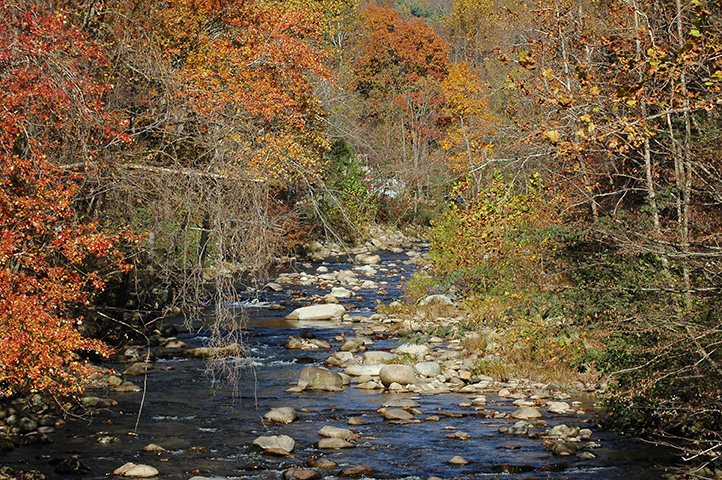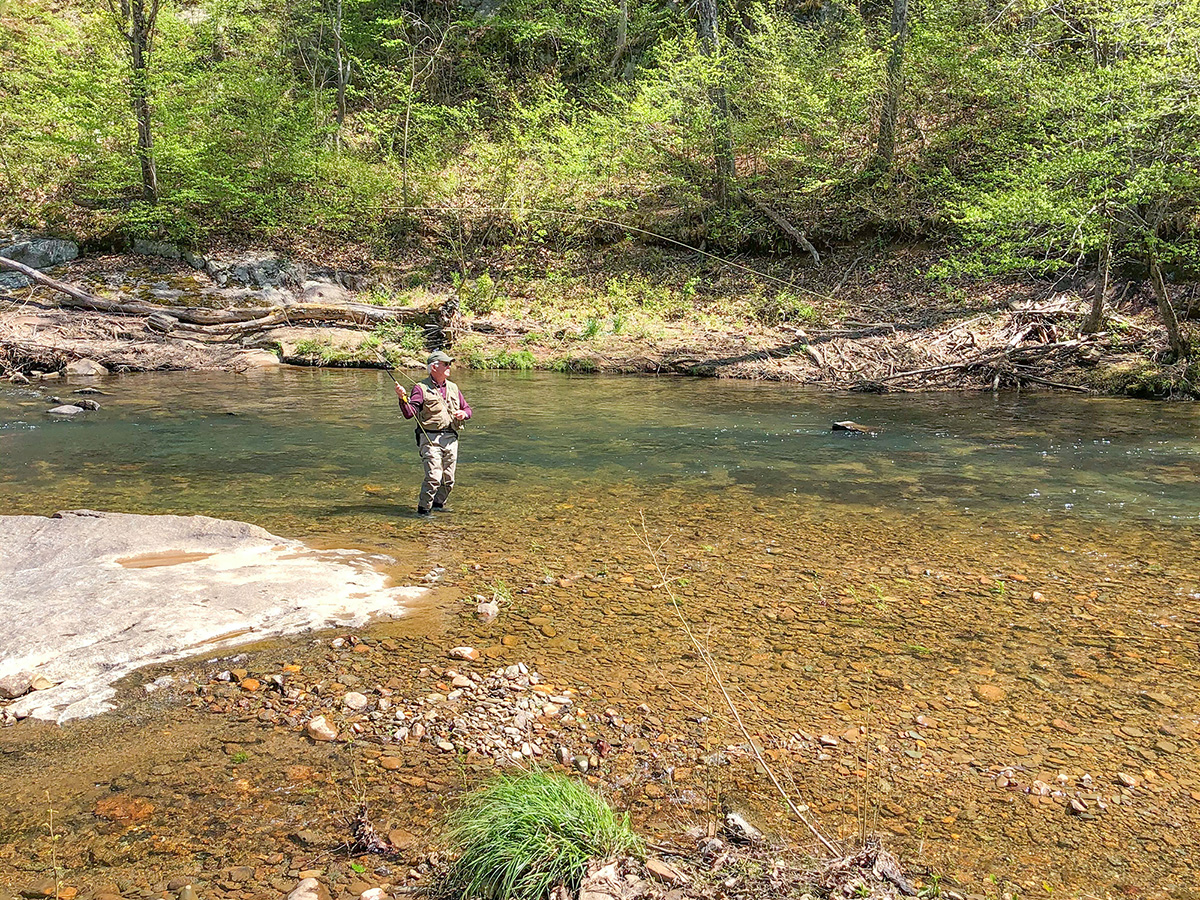
 Department of Conservation and Recreation
Department of Conservation and Recreation
Conserve. Protect. Enjoy.
 Department of Conservation and Recreation
Department of Conservation and Recreation
By Julie BuchananPosted November 22, 2021
Virginia scenic river designation could be a tool to protect quality fish habitat, according to a VCU study.

The Rockfish River, a designated state scenic river since 1990. Photo courtesy Nelson County.
How does a river’s eye-pleasing beauty benefit the organisms that make it their home?
Graduate students at Virginia Commonwealth University dove into data to answer this question, using the Virginia Scenic Rivers Program at DCR as a case study.
Led by Dr. Dan McGarvey of VCU’s Center for Environmental Studies, they built species distribution models to assess whether Virginia scenic rivers provide fish with higher quality habitat than statewide rivers at-large.
For 21 of 33 species they studied, model-predicted habitat suitability was significantly higher in scenic rivers than in rivers without the designation.
Results of the two-year study have been published in “Biological Conservation,” a scientific journal.
“At the end of the day, the study indicates the scenic river designation is not only good for people but also good for fish,” said Olivia Latham, a study co-author. “Scenic rivers are not just nice for humans to look at. Expanding the designation to other viable fish habitats can have positive benefits for those habitats.”
Species distribution models are algorithmic tools that combine known species locations with environmental data to predict species distributions over geographic space or time. The models are commonly used in ecology and biodiversity conservation.
The 33 species selected for the study are broadly representative of the nearly 200 freshwater fish species found in Virginia. The study focused on habitat in these east-flowing rivers: the James, York, Rappahannock, Potomac, Roanoke and Chowan.

Moormans River with John Birdsall. Photo Kat Imhoff
“We conclude that scenic rivers provide important conservation benefits to Virginia's freshwater fishes,” the authors write. “We also note that our flexible, model-based process can be applied in other rivers and used to inform other types of freshwater conservation programs that seek to identify and protect the highest quality habitats.”
McGarvey, who teaches a graduate course on ecological modeling, said his main interest in the study was to give students learning opportunities that use real-life scenarios. Data for this project came from a multitude of sources, and all work was done in a computer lab.
“Students tend to be more engaged and learn more when they can see a difference being made,” he said. “These data are there for anyone who wants to use them.”
Quality of fisheries is one of the numerous criteria used to evaluate potential scenic river designation. Many qualities that make rivers scenic to the human eye, such as tree canopy and vegetated buffers, can also benefit aquatic life and contribute to healthy waterways.
“Tree coverage provides the shade that many fish species need, and it’s a lot more appealing to look at a scene with trees than a clear-cut forest,” Latham said.
Lynn Crump, coordinator of the Virginia Scenic Rivers Program at DCR, views the study results as an additional way to promote the benefits of scenic river designation.
“I've had people say, ‘what's the justification for this program?’” she said. “Well, this is one of the justifications. The findings show that if scenic rivers continue to be protected, they will continue to provide this good environment for fisheries.”
Only 2% of Virginia’s 50,000 river miles are state-designated scenic rivers. The designation requires a passing evaluation score, community support at the local level, and approval by the General Assembly and governor.
The published VCU study is available at https://doi.org/10.1016/j.biocon.2021.109357.
Note: Olivia Latham is a zoology lab technician with DCR’s Virginia Natural Heritage Program. She worked on the study as a graduate student at VCU.
Categories
Recreation Planning | Scenic Rivers
Tags
scenic rivers

